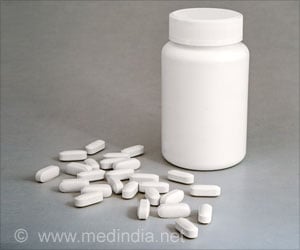Currently, inhibition of tumor necrosis factor á (TNFá) is the most effective strategy for controlling the painful symptoms of SpA ,But does anti-TNF therapy treat ankylosis
Arthritis is a condition resulting from inflammation of joints. It causes swelling and pain resulting in limited movement.
Spondylarthritis (SpA), ankylosing spondylitis (AS), psoriatic arthritis (PsA), and inflammatory bowel disease are all associated rheumatic diseases collectively known as "spondyloarthropathies". Aside from chronic inflammation, these conditions are all characterized by ankylosis, stiffness and fusion of bone in the spine and peripheral joints. Ankylosis is an incapacitating condition that ultimately results in loss of spinal mobility and function severely affecting a person's quality of life.Currently, inhibition of tumor necrosis factor á (TNFá) is the most effective strategy for controlling the painful symptoms of SpA and slowing vertebral joint destruction. But does anti-TNF therapy do anything to reduce the incidence or severity of ankylosis?
To answer this critical question, a quartet of researchers led by Dr. Frank P. Luyten, Division of Rheumatology, University Hospitals, Leuven, Belgium, tested the effectiveness of etanercept, an established TNF receptor, on animal models of arthritis.
Their findings, highlighted in the February 2007 issue of Arthritis & Rheumatism (http://www.interscience.wiley.com/journal/arthritis), cast doubts on the feasibility of preventing joint and spine ankylosis with anti-TNF strategies while shedding light on the process of SpA.
A sample of male mice with spontaneous arthritis were caged together and observed from the age of 10 weeks. From week 12 to week 25, the mice were treated twice weekly with etanercept, in a strength comparable to standard dosage for human patients, or a placebo. Mice were also scored twice weekly for signs of arthritis, including cartilage formation, bone formation, and joint ankylosis. The mice were killed at age 25 weeks, autopsied, and analyzed, through cell population staining, for the presence of TNFá.
In a complementary experiment, another sample of mice was induced with arthritis, using methylated bovine serum albumin. Four days later, these mice were given a single injection of etanercept. Three days later, on day seven, they were killed. Signs of arthritis were assessed and graded for cartilage destruction and bone erosion.
Advertisement
"Our observations strengthen our hypothesis that new bone formation in SpA is clinically relevant and largely independent of inflammation," Dr. Luyten states. "Long-term results from clinical trials are required to corroborate this hypothesis in patients with SpA," he acknowledges, "and to define whether the process of ankylosis should become a separate therapeutic target."
Advertisement
Source-Eurekalert
PRI





